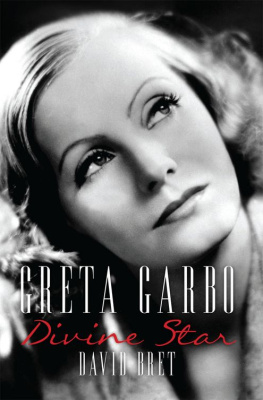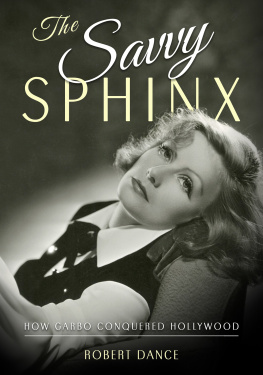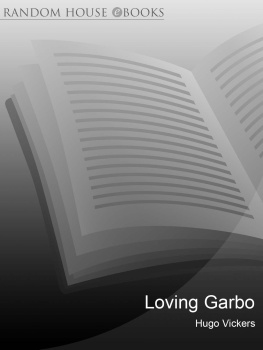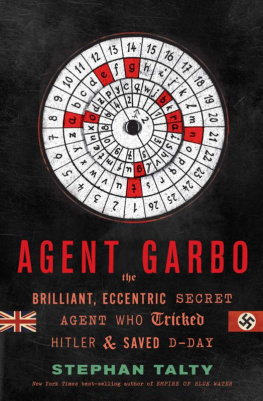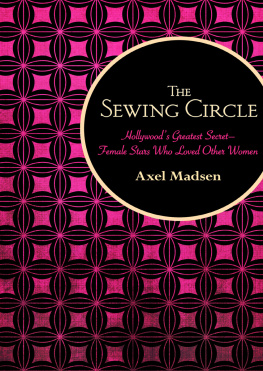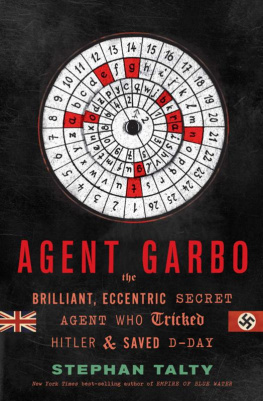W riting this book would not have been possible were it not for the inspiration, criticism and love of that select group of individuals who, whether they be in this world or the next, I will always regard as my true family and autre coeur: Barbara, Irene Bevan, Marlene Dietrich, Ren Chevalier, Axel Dotti, Dorothy Squires, Anne Taylor and Roger Normand, que vous dormez en paix. Lucette Chevalier, Jacqueline Danno, Hlne Delavault, Tony Griffin, Betty and Grard Garmain, Annick Roux, John Taylor, Terry Sanderson, Charley Marouani, David Bolt. Also a very special mention for Amlia Rodrigues, Joey Stefano, those hiboux, fadistas and amis de foutre who happened along the way and mes enfants perdus.
Very many thanks to Jeremy Robson and the munificent team at The Robson Press. Likewise my agent, Guy Rose, and his lovely wife. Also to my wife, Jeanne, for putting up with my bad moods and for still being the keeper of my soul.
G reta Garbo was an enigma. She appeared as if from nowhere, taking Hollywood and the world by storm at a time when the movies were ruled by the likes of Americas Sweetheart, Mary Pickford, and a clutch of now-forgotten vamps. She was one of the few to survive the transition from silents to talkies not only this, but to reach such unprecedented heights of success as to leave her contemporaries gasping in amazement.
Because she was a foreigner from a country where attitudes towards life and sex were much more relaxed than in 1920s America, myths and rumours sprang up about her upon her arrival Stateside, as had happened with Valentino. Here was no ordinary girl- next-door , but a sophisticated, worldly woman who had probably seen and done more in her twenty years than most of them would in a dozen lifetimes. MGM, headed by the tetchy Louis B. Mayer, had no way of knowing how to handle her or her irrational behaviour, yet they complied with her every whim and submitted to demands other stars would never have got away with because, as a creature of great mystery as well as one of great beauty, the general public the ones who put money in their pockets could not get enough of her. No one would ever tell Garbo how to dress, how to conduct herself, and most importantly what to say. Unlike the other stars on their roster, she also refused to submit to a largely fabricated biography penned by a studio publicist. Until she stopped giving interviews, very early in her career, she replied to each question she wanted to reply to with stark honesty. If the subject was too personal, she would tell the interviewer to mind their own business and if she disliked a journalist, she would tell them so to their face and walk away.
In the male-orientated studio system, Garbo afforded herself the kind of power no other actress had ever possessed. She was never less than her own woman, the pawn of no man not even when it came to love affairs. If things ever seemed like they were getting a little too tough and she might be disciplined fired, even she would pronounce the stock statement, Fine. Then I will go home to Sweden!
Garbo was a minor star in Sweden when her Svengali, Mauritz Stiller, took her to America. There she was treated like some kind of freak, though it was not long before she put her most formidable weapons to good use: her ice-queen beauty, sharp wit and abrasive tongue, her indifference towards her surroundings, money, and her peers. Soon she was taking lovers of her choice, caring little if they belonged to someone else. When MGM warned her to steer clear of a man or woman she ran towards them with open arms.
Garbo appeared with most of the great stars of the day, and eclipsed them all in every scene they shared: Clark Gable, Wallace Beery, Marie Dressler, the Barrymores, Robert Taylor, Joan Crawford, and most importantly, John Gilbert, with whom she had a massively publicised affair. She very rarely granted interviews when she did, they were heavily edited and censored by MGMs publicity department. Here, they are drawn from their original uncensored sources and give a clear insight into Garbos mystique, and why she always wanted to be alone. On and off the screen, Garbo never ceased being an actress, keeping herself constantly in check, like a great military strategist planning her every move so terrified was she of letting slip that infamous mask of cool reserve.
Garbos films are masterpieces. Though she portrayed great heroines from literature and world history Anna Karenina, Marie Walewska, The Lady of the Camellias, Queen Christina each role was specifically adapted to match her complex persona, which, as this represented a myriad of contrasting moods, expressions and emotions, proved a nightmare for scriptwriters and directors alike. Garbo lived these roles, and with her innate talent for climbing inside her characters skin, refused to play a scene other than her way. If her way was not accepted, the set would be closed down until her wishes could be carried out to the letter.
Like her nearest counterpart, fellow exile Marlene Dietrich, Garbo knew more about lighting and stagecraft than the most experienced technician. She very rarely rehearsed with any of her co-stars, even for complicated dance-routines, preparing her role in the privacy of her home and always getting it right. She could change her facial expression ten times within the space of a few seconds: from joy to melancholy, from laughter to tears, from passion to Pity me! This pathos is most evident in her three most celebrated films, Camille, Anna Karenina and Queen Christina.
Garbo left the movies in 1941, following what she considered unfair criticism of her yet to be released film, Two-Faced Woman. Despite numerous phenomenal offers, she never faced another movie camera and for half a century lived as an open recluse rarely confined to her apartment for long, travelling the world and mixing with the social set, yet always on the lookout for that accursed photographer, with friends sworn to the strictest secrecy regarding her movements. Garbo always kept a magazine or hat in her hand, which would be brought up to her face whenever she felt in danger of being photographed.
Garbos major relationships during her post-Hollywood years were conducted outside the acting fraternity. She had an affinity with gay men and Sapphic women: socialite Mercedes de Acosta, musician Leopold Stokowski, nutritionist Gayelord Hauser, and tetchy snapper Cecil Beaton all boasted passionate love affairs with her, but these are now known to have been platonic. Alistair Cooke called her, Every mans fantasy mistress. She gave you the impression that, if your imagination had to sin, it could at least congratulate itself on its impeccable taste.
Garbo said more with her eyes than most of her contemporaries would ever dare put into words. An involuntary gesture from her a frown, the slightest shrug of the shoulder would have acted every one of todays so-called superstars off the screen.
This is her story.
I cant remember being young, really young like other children. I always had my opinions, but never told my mind. No one ever seemed to think I was young!
S he was born Greta Lovisa Gustaffson at 7.30 p.m. on 8 September 1905, at the Gamla Sodra BB Maternity Hospital in Sdermalm, on Stockholms south side, at that time little more than a slum. Records show that she was a healthy, seven-and-a-half-pound baby, though this did not prevent her parents from insisting she should be baptised into the Lutheran faith (then technically Swedens only legal religion). For the first ten years of her life, almost everyone addressed her as Kata, the way she mispronounced her name.

